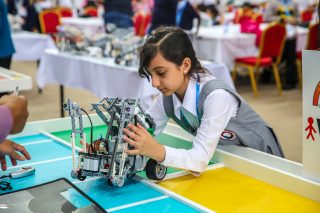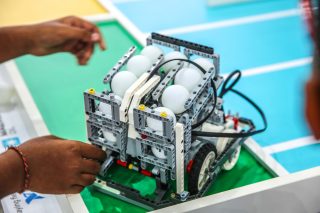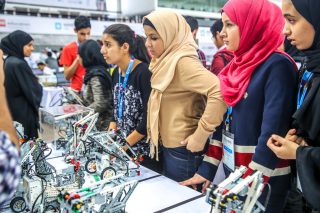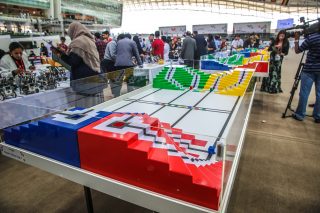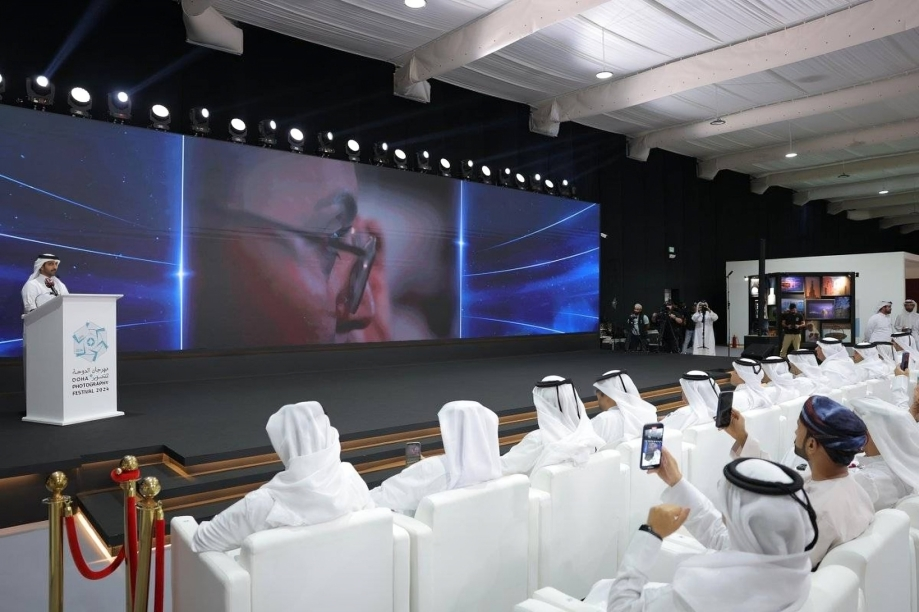A two-day robotics challenge this weekend had Al Shaqab Stadium buzzing with the sound of whirring machinery, clicking laptop keys and, unusually, girls’ laughter.
Several hundred female students from both independent and international schools were among the approximately 1,000 young science and technology enthusiasts participating in this year’s annual National Robotics Olympiad.

The event, aimed at encouraging students in Qatar to learn more about robotics and programming by building functioning prototypes, suggests more young women are preparing to enter industries in science, technology and engineering – fields that have traditionally been dominated by men.
“It’s usually just boys who take this up, but we wanted to prove that girls could join and compete,” said junior high student Mary Carmelle Medina of the Philippine School Doha.
But despite their burgeoning interest in the field, several girls told Doha News that their penchant for robotics made them a minority in their classes, schools and social circles.
The separation seemed to continue into adolescence, where the areas of the stadium dedicated to junior high, high school, and university participants saw fewer numbers of girls than the one for elementary school children.
However, that did little to dampen the enthusiasm of students.
Participants’ perspective
It was a love of building that drove Nada Abu Hayeh, a 13-year old Palestinian student at Amna Bint Wahab Preparatory School, to join her school’s robotics club.
“Our school has been presenting here for four years, but this is the first year that I’ve been here. It was a lot of work. The team has had to stay back for two extra hours after school every day of the school year. But it’s worth it. We’re doing something different, creating things, which not many people get to do,” she said.
Despite not bagging a prize in their category, Abu Hayeh and her two teammates said that coming up with a design, building and programming their three machines – a moving tractor-like robot, a separating machine, and a conveyor belt – was a satisfying reward in itself.

For others, like 16-year old Qatari Aisha Al Darwish, robotics offered a taste of possible career options ahead of applying to university.
Along with her friend Basma Ayman, Al Darwish created a prototype of a machine to extract natural resources in “dangerous” environments.
“We had a robotics unit as part of our curriculum in Grade 8, and that (piqued) my interest,” Al Darwish said. “I love this field … (and) I love the sciences. I’m sure what I want to major in in college, so I decided it wouldn’t hurt to try new things like this.”
Robotic challenges
The competition’s main categories involved teams of students dismantling, rebuilding and reprograming a fully functional robot to carry out different tasks.
Elementary school children, for example, had to create a robot that mimicked pearl diving, while those in the junior high school category had to program a robot to pick up and differentiate lego blocks along a course according to color.

High school participants, meanwhile, had to create more sophisticated models that climbed colourful “mountains” and performed other tasks, while university students had to create a robot that could bowl.
The initiative is part of Go Robot, a local school robotics programme established in 2012 to help develop interest in science, technology, engineering and math.
The program is supported by the Supreme Education Council, the College of the North Atlantic – Qatar and Maersk Oil. It incorporates some 30 hours of teacher training, free robotics kits and other year-round help for schools interested in establishing a robotics extracurricular program.
This year also marks the first in which Qatar plays host to the World Robot Olympiad, which runs from Nov. 6 to 8. The three-day event will see yesterday’s 34 winning teams compete head-to-head with more than 3,000 of the most talented science students from around 50 countries.
Thoughts?


